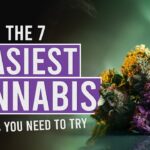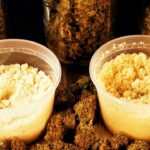The Dark Truth of Drugs & Alcohol: How Youth are Falling into the Trap | Full Breakdown & Real Facts
| thcscout | Facts | No Comments on The Dark Truth of Drugs & Alcohol: How Youth are Falling into the Trap | Full Breakdown & Real Facts
Share
- No bookmark found
✍🏻Have you ever wondered why the youth of today are more vulnerable than ever to drugs and alcohol? Is it just peer pressure… or is there a deeper reason hidden behind curiosity, stress, and societal expectations?
Welcome back to Knowledge Chronicle, where today, we’re diving deep into one of the most important and urgent topics—Drugs and Alcohol Abuse. In this detailed episode, we will explore what drugs really are, how they affect our body and brain, the stages of addiction, why adolescence is the most vulnerable age, and how we can prevent and control this menace before it’s too late.
So, stay with us till the end—because this could change or even save someone’s life.
The Rising Threat of Drug and Alcohol Abuse
Let’s begin with a fact that might shock you…
According to several recent surveys, drug and alcohol abuse among youth has seen a sharp rise, especially in the last decade. What’s even more worrying? This issue isn’t just a medical or legal problem—it’s a social epidemic that affects families, friends, and future generations.
But what exactly are these substances that are being abused? Let’s break them down.
Types of Commonly Abused Drugs
1. Opioids – The Silent Depressants
Opioids are drugs that bind to specific receptors in the brain and nervous system, particularly opioid receptors in our central nervous system and gastrointestinal tract.
The most common opioid? Heroin, also known as smack.
Chemically called diacetylmorphine, heroin is a white, bitter, odourless crystalline powder.
It’s made by acetylating morphine, which is extracted from the latex of the poppy plant—Papaver somniferum.
Heroin is usually taken by snorting or injection, and it’s a depressant, meaning it slows down body functions.
The danger? Users often fall into a deep state of sedation and disconnection from reality, which can lead to overdose and death.
2. Cannabinoids – From Nature, Not Always Safe
Cannabinoids are chemical compounds that affect the brain, especially the cannabinoid receptors.
They are obtained from the inflorescences of the Cannabis sativa plant.
Common forms:
Marijuana
Hashish
Charas
Ganja
These are taken by smoking or oral ingestion.
The major effect is on the cardiovascular system, causing fluctuations in blood pressure, heart rate, and even altered sensory perception.
Though natural, their misuse has serious mental and physical side effects, and they are often used to escape emotional or psychological stress.
3. Coca Alkaloid or Cocaine – The Illusion of Energy
Cocaine is derived from the coca plant Erythroxylum coca, native to South America.
Cocaine, also called crack or coke, is snorted and creates a powerful stimulation of the central nervous system.
It works by blocking dopamine reuptake, making the user feel euphoric and extremely energetic… for a while.
But soon, it leads to:
Hallucinations
Paranoia
Nervous breakdowns
And even cardiac arrest in excessive doses.
Other Abused Substances & Their Misuse
Let’s now look at prescription drugs that are being misused:
Barbiturates
Amphetamines
Benzodiazepines
These are meant to treat depression, anxiety, and insomnia, but when taken without medical supervision, they lead to dependency.
Another commonly misused opioid is Morphine—a powerful painkiller used in surgeries but dangerous when abused.
Did you know that even some fruits, seeds, and plants like Datura and Atropa belladona have hallucinogenic properties? These have been used in rituals and folk medicine but can be life-threatening if consumed in excess.
Tobacco – A Gateway Drug
Tobacco might seem less dangerous, but don’t be fooled.
It contains nicotine, an addictive alkaloid that:
Stimulates the adrenal gland
Releases adrenaline and nor-adrenaline
Increases heart rate and blood pressure
Over time, it leads to:
Lung, throat, and bladder cancers
Emphysema, bronchitis, coronary heart disease
And in case of chewing tobacco, oral cancer.
It also reduces the oxygen-carrying capacity of blood by increasing carbon monoxide levels.
That’s why cigarette packets carry a clear statutory warning—but are we paying attention?
Adolescence – The Most Vulnerable Phase
Now let’s talk about the most critical part—why adolescents fall prey to drugs and alcohol.
The period between 12 to 18 years is known as adolescence, a time of:
Biological changes
Hormonal surges
Psychological confusion
It’s a transition phase between childhood and adulthood.
#WhyYouthChooseDrugs #DrugAbuseAwareness #AlcoholAddictionTruth #TeenSubstanceAbuse #ai #StopDrugAbuse #YouthAndAddiction #drug #who #SayNoToDrugs #AdolescentsAtRisk #drugaddiction #DrugsKillDreams #FightAddictionTogether #health #KnowledgeChronicle #MentalHealthMatters #science #PeerPressureAwareness #CleanLivingCampaign #3d #AddictionPrevention #biology #trending #doctor












